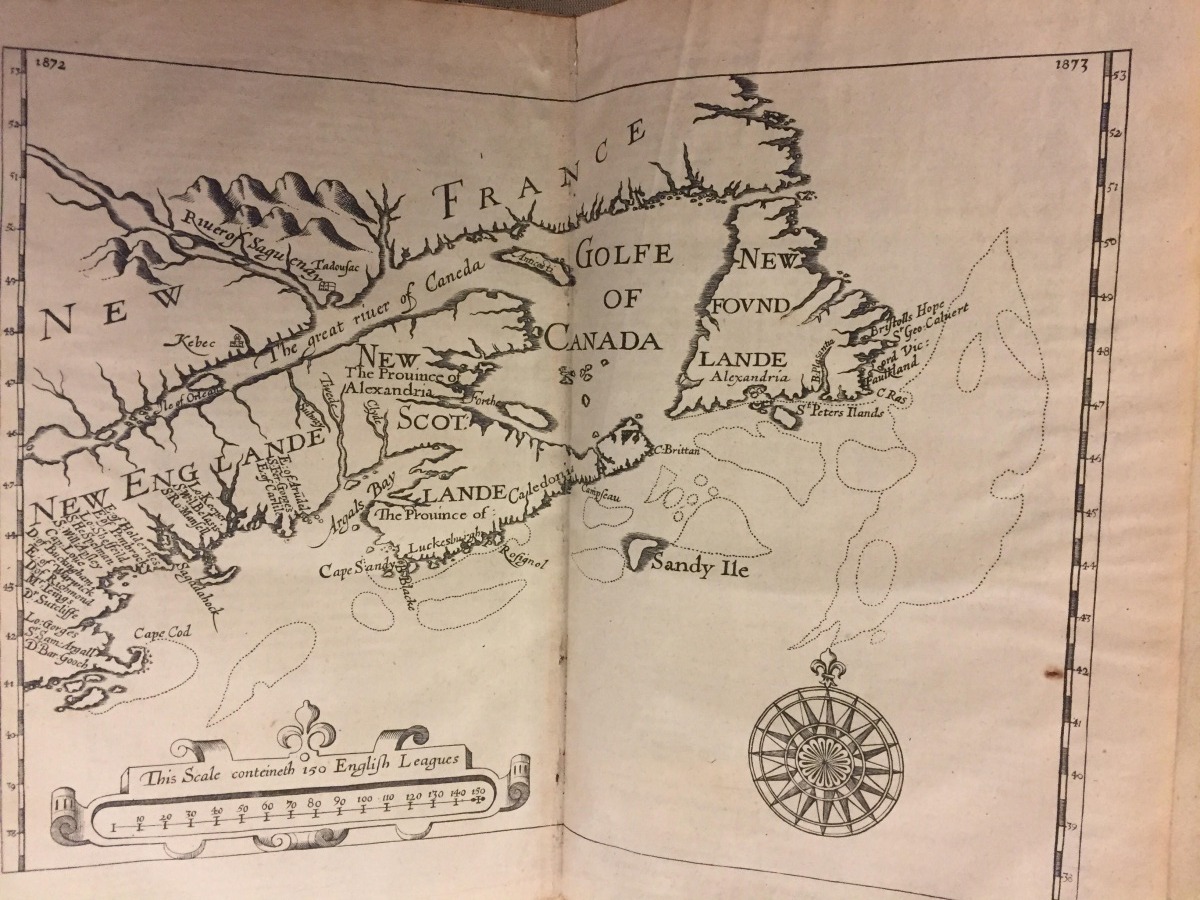Samuel Purchas’s Hakluytus Posthumus, or, Purchas His Pilgrimes. London: Henry Fetherston, 1625.
English cleric Samuel Purchas (1544-1626) published the first volume of his Pilgrimes series, a compilation of accounts and ‘relations’ of geographical discovery and exploration, in 1613. Hakluytus Posthumus (1625) was a continuation of English writer Richard Hakluyt's seminal Principal Navigations, a similar set of compilations, based partly on manus left by Hakluyt upon his death. Although Purchas was sometimes careless in his scholarship, his collection of narratives is frequently the only surviving source for studying the history of specific explorations. This 1625 printing of Purchas is the only edition that includes a deion of the Native American ‘countrey of Mawooshen’ (now central coastal Maine). In 1605, while exploring coastal Maine, English Captain George Waymouth and his crew abducted five indigenous people and brought them to England. According to English records, these captives referred to their homeland as Mawooshen, a term possibly meaning “band of people walking or acting together.” Between 1616 and 1619, the Mawooshen confederacy was decimated by the plaque that arrived from Europe, scattering survivors who joined other bands of Wabanaki people. This epidemic, which killed up to 90% of all Wabanaki inhabitants living along coastal New England, became one among many devastating events that forever changed the lives of Maine’s first inhabitants. Statehood had far-reaching consequences for all of Maine’s inhabitants, including the Wabanaki. With the legal framework of statehood in place, tribes were pressured to assimilate—to settle and farm on designated family lots and abandon their traditional migration patterns to hunt, fish, and gather. Despite the magnitude of statehood’s impact on the Wabanaki, their concerns received no attention from statehood voters or from the separation movement’s leaders.
